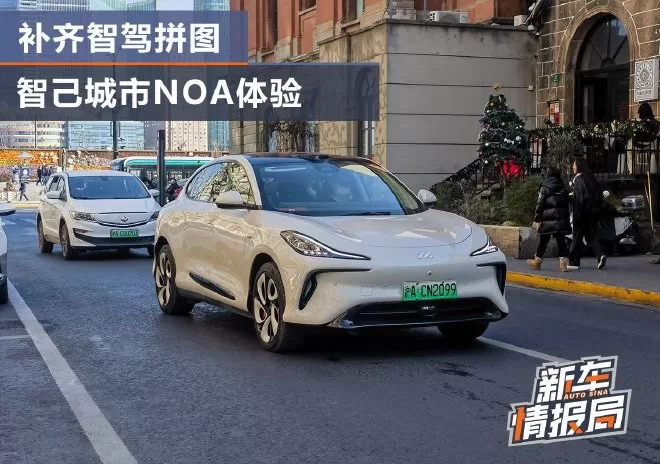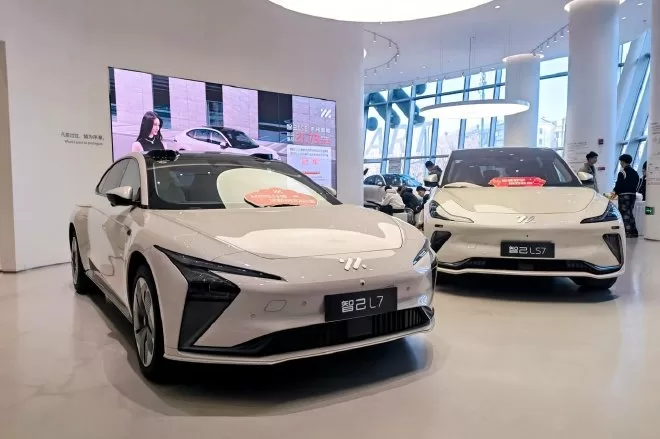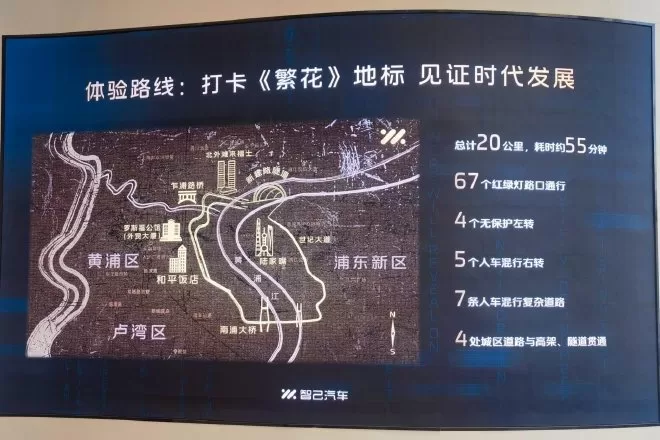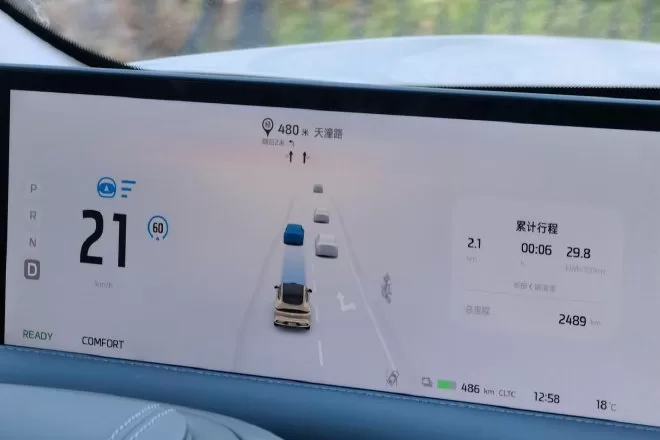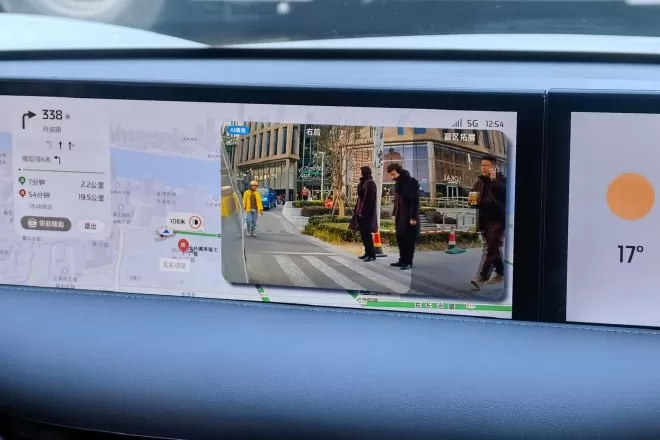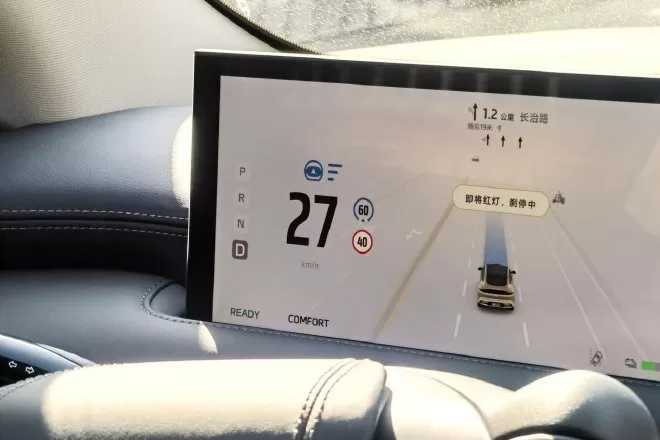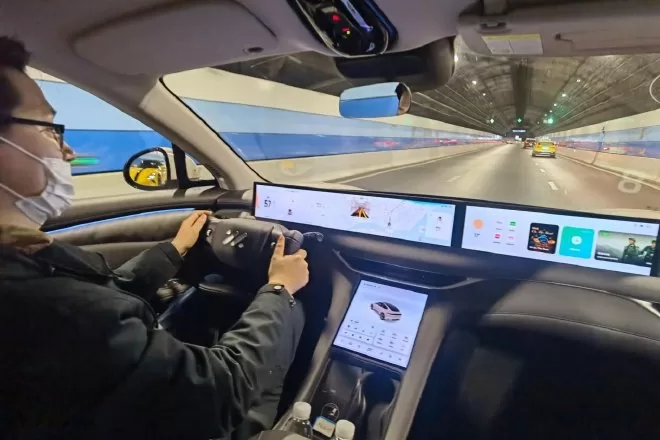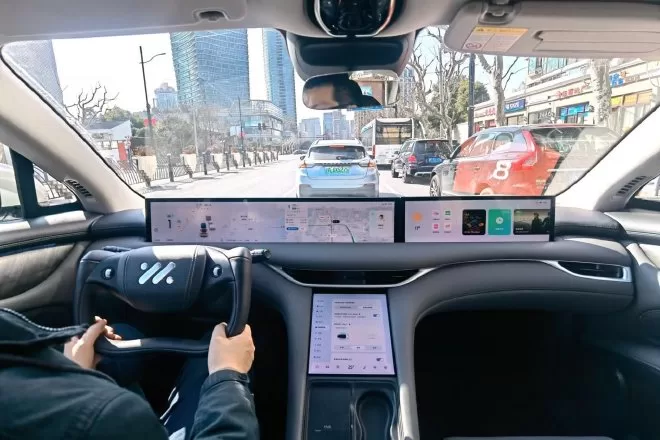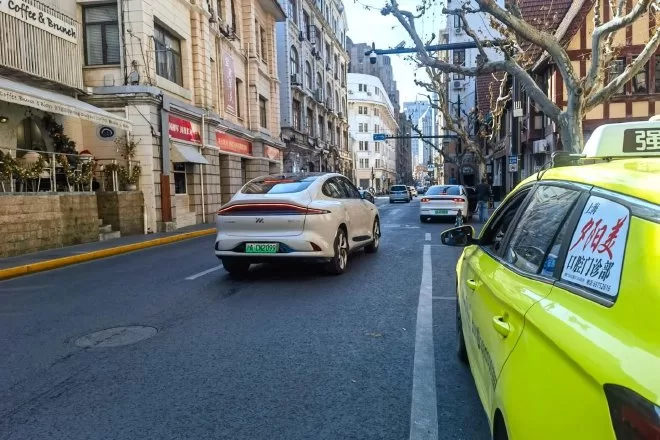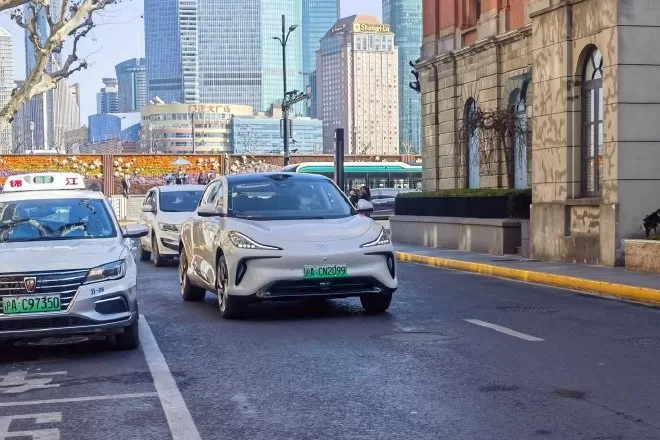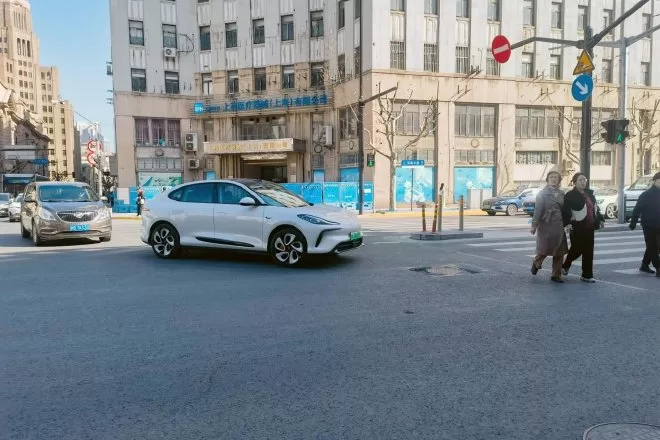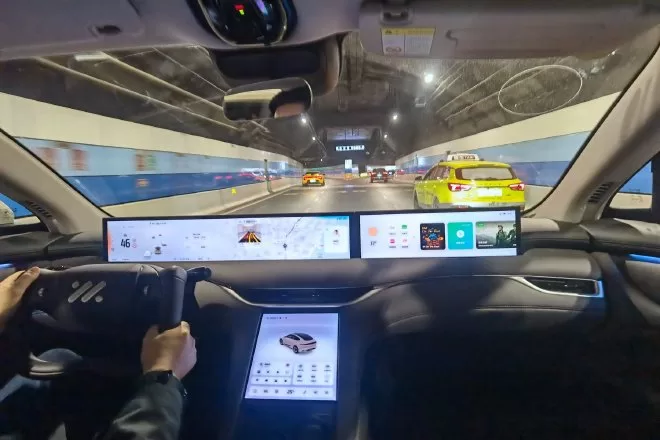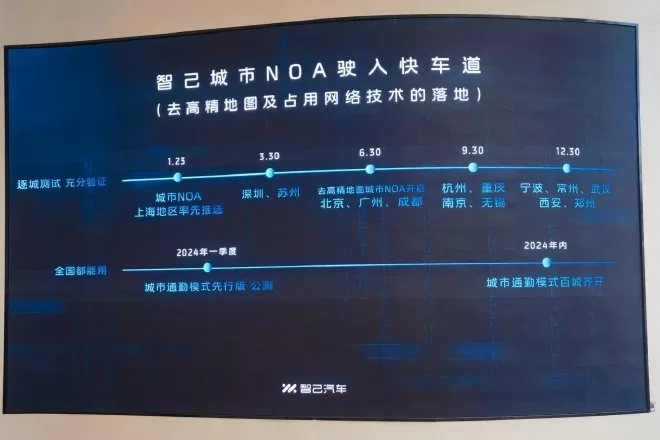What is the future direction of the evolution of new energy vehicles? Whether it’s a major car manufacturer or an ordinary new energy vehicle enthusiast, they will all mention one essential item: intelligent driving. The ultimate goal of intelligent driving is fully autonomous driving, but this goal is still far away. In the near future, the first threshold to be crossed is the navigation assistance driving from highways to expressways, and then to city streets. In recent years, major “internet-famous” car companies have announced their own navigation assistance driving plans, and Zhiji, backed by SAIC, a not-so-“new force,” has also provided detailed plans in this regard.
At the end of last year, Zhi Ji officially announced that Zhi Ji IM AD high-speed NOA has been fully connected nationwide, covering high-speed sections in 333 cities and elevated roads in 59 cities, with a total length of 389,000 kilometers. By 2024, Zhi Ji will be “All in” the urban scene. Before the Spring Festival, urban NOA push will be launched in Shanghai, followed by urban NOA, commuting mode, Pilot+, one-click AI driving 2.0, and high-precision automatic parking. So, on the eve of the Spring Festival, we were also invited to Shanghai, the magic city, to experience Zhi Ji’s urban NOA, a key part of smart driving. What are the hardware specifications?
The achievement of NOA’s intelligent car is mainly the Orin intelligent driving computing platform. The LS6 we experienced has hardware with a long-range high-precision LiDAR + high-definition perception camera + millimeter-wave radar + ultrasonic radar + high-precision positioning unit. The LiDAR adopts the layout scheme of the watchtower, with a wider field of view. This mainstream hardware solution with LiDAR as the main body is completed by the NVIDIA OrinX chip for data processing, which can achieve the computing power required for L4 level autonomous driving. The hardware equipment also requires high-level software coordination. When the configurations of high-level hardware are almost the same, the difference brought by the software’s capabilities will be very obvious. The goal of the NOA team in creating products is to provide a NOA experience that is “more like a human.” Therefore, it learns the algorithm of human experienced drivers, using tens of thousands of experienced and standard-driving old drivers as models, deeply learning massive driving behavior data, with fewer takeovers and more skilled handling of emergency situations when changing lanes. NOA says that it pursues the most perfect and compliant way to maintain the highest commuting efficiency while following traffic rules. Our experience happened to be on a Wednesday, in the core section of Shanghai, where the roads were already busy. Experiencing assisted driving in such complex and changeable road conditions, with dense traffic and occasional appearances of pedestrians and bicycles, really tests the skill of NOA. So, how did it perform in actual road conditions? Urban NOA experience
The test covered a total distance of about 20 kilometers, including the popular section from “Blossoms”. It passed through 67 traffic lights, made 9 turns at intersections, and navigated 7 complex roads with mixed pedestrian and vehicle traffic, as well as various urban roads, overpasses, and tunnels. The test route included many narrow sections with one or two lanes, as well as numerous complex scenarios with mixed pedestrian and vehicle traffic.
The NOA navigation assistance in the smart city must be based on the navigation opening state to achieve the city navigation assistance function, which is to add more sensors’ perception and enhance high-precision maps and positioning on the basis of basic navigation. This navigation assistance can achieve intelligent path planning for city roads covered by high-precision maps, and automatically lane keeping, speed adjustment, lane changing, overtaking, avoiding detours, smart evasion of large vehicles, waiting at intersections, and turning left and right at unprotected intersections within the design area. It is important to note that what we experienced this time is only the BETA version, not the final version to be pushed to customer vehicles, so this experience is only for the version we experienced. In short, on the function-covered city roads, the theoretical experience of the smart city NOA is close to fully automatic driving. So for us drivers, mastering the smart driving status or interaction of the car only needs to be done through this large central control screen.
The interaction of the car’s screen function is also very concise and friendly, ensuring a smooth experience when using the function. The display on the screen is very accurate in showing the surrounding road conditions, including large vehicles, small vehicles, bicycles, pedestrians, lanes, traffic lights, and even vehicles passing through the intersection ahead. This is all thanks to the precise capture and recognition of the surrounding environment by the onboard hardware system.
However, many novice intelligent drivers still like to maintain a meticulous focus on the external environment during the intelligent driving process. For this reason, the intelligent system also provides the industry’s original full-area vision blind spot assistance. In IM AD city NOA mode, it can activate the blind spot assistance in front and behind the A-pillar, as well as the side rear blind spot assistance, to timely observe the road conditions on the left and right, and have a better overall grasp.
Activating the operation of the urban NOA is the same as the previously launched high-speed NOA. When the vehicle is on the road and driving on a road covered by the NOA service, a prompt will appear in the speed area of the car’s screen. At this moment, you only need to push the gear lever on the right side of the steering wheel downward to activate the urban NOA mode. After three step-like icons appear on the screen, the vehicle can automatically drive according to the destination set in the previous navigation. The experience of urban NOA is similar to that of high-speed or expressway NOA. The difficulty does not lie in “small tasks” like lane keeping, because the roads are not fully closed like highways. Therefore, there will be more road conditions to face, and the information on the high-precision map itself will be more complex. This experience is also based on the high-precision map and cannot be activated in road sections where the function is not allowed. In addition, it is important to note that at the current level of technology and legal requirements, both types of NOA are only auxiliary. Drivers must remember that there are various conditions in which this function is not suitable to be activated, and even when using it, they must be prepared to take over and pay attention to the road conditions.
On the smooth elevated bridge and tunnel expressway, the city’s NOA basic lane change function is quite cautious. When the vehicle is driving slowly in the lane or the navigation determines the need to turn, the car will ensure that the rear is safe and conditions are met to complete the lane change. The process of signaling, turning, and returning to the original position is also very clean and neat. In the event of surrounding vehicles suddenly getting close during the lane change, the system will quickly make timely adjustments, with no abrupt feeling, and performs very smoothly. It can monitor and predict the behavior of surrounding vehicles in real time. When encountering a vehicle trying to cut in, the system can accurately determine the intention of the other vehicle. It has good strategic ability and will respond to the other vehicle’s actions, choosing to accelerate through or slow down to let the other vehicle pass, depending on the strength of the other vehicle’s actions. This ability also applies at the intersection of the expressway and the general road, where the system’s strategy is not as conservative as that of a typical novice.
But its response strategy still does not reach the level of “experienced driver”. The system’s logic at the bottom is still safe. When entering or exiting the ramp or facing turns and parallel roads on the general road, facing the extreme following distance and the driving habits of other vehicles without zipper traffic, the system also seems inadequate. The performance on the car is that the car will stop in place, and the system will prompt the driver to take over the vehicle manually at this time to actively assist the car in accelerating and decelerating to complete the lane change in time. Many NOAs have to face the issue of driving on large curvature ramps. Under the operation of the system, it can also enter and exit very calmly, and the steering wheel turns smoothly throughout the process without large-angle corrections. Under normal circumstances, the car will always stay in the middle of the lane, without crossing the line or crossing the boundary, and the entire acceleration and deceleration control is just right, giving a very stable feeling to the person sitting in the car.
The system is very smart in choosing the road. In addition to changing to the exit lane in advance based on high-precision maps, or entering and exiting fixed lanes with solid lines, our test vehicle can actively choose and change to a lane with higher traffic efficiency under the judgment of big data on road conditions and traffic flow intelligence prediction, as well as onboard equipment, while ensuring driving safety. On general roads in urban areas, the difficulty increases. There are not only cars parked illegally on the roadside, but also mixed-use bicycles, pedestrians suddenly appearing, various types of roadblocks appearing inexplicably on the roadside, and the need to guard against “ghost heads.” At this time, the sensors all over the intelligent LS6 will monitor and calculate in real-time, making timely responses to sudden emergencies.
During normal driving, we have encountered several instances of electric motorcycles suddenly darting out diagonally or vehicles pulling over too close. The car was able to avoid them as much as possible in the first instance. It is worth mentioning that its way of avoiding is not just about braking, but also about maneuvering the car as close as possible to the other side of the lane, like a human driver, and when necessary, it will directly choose to change lanes for passage.
The city’s NOA system will definitely face the issue of traffic lights. This system can accurately identify standard traffic lights and respond to changes in traffic lights, so when facing traffic lights, you just need to sit still and the system will solve it all automatically. With the support of high-precision maps, even if the opposite lane at the intersection you are passing through is not on the same level as you, it can accurately drive into the lane to enter.
At the intersection of traffic lights, it also has the function of turning left and right without protection, and making U-turns. Faced with more complex traffic participants, the system needs to safely and quickly enter the corresponding lane. In actual experience, it can complete the task well. First, when facing oncoming vehicles, it can accurately identify and make strategic maneuvers, and when approaching pedestrians, it can also demonstrate good manners. It can even make the maneuver of driving around pedestrians from behind.
NOA automatically downgrades and prompts the driver when it encounters road sections that are not covered by high-precision maps and services. It can only execute forward straight or lane change, but cannot automatically turn left or right towards the destination. Once the vehicle re-enters a road section covered by high-precision maps and services, NOA will come back online. In summary, in the busiest core road sections of the city, NOA’s experience impressed me with its precise perception, optimal path selection, and more experienced driver response strategies. Further improvements in details and data accumulation are needed before the official launch.
According to its plan, this year is a big year for IM AD’s intelligent driving. The first move is the NOA in the city, which will start the user beta test in Shanghai as scheduled. Next, there will be the opening of the commuting mode in a hundred cities, NOA without maps, one-click AI driving 2.0, memory parking, and parking in three-dimensional parking garages, and other advanced intelligent driving functions will be launched one after another. Like the name of the brand “智己”, its future will also continue to add intelligence, and the intelligent future can be expected.
